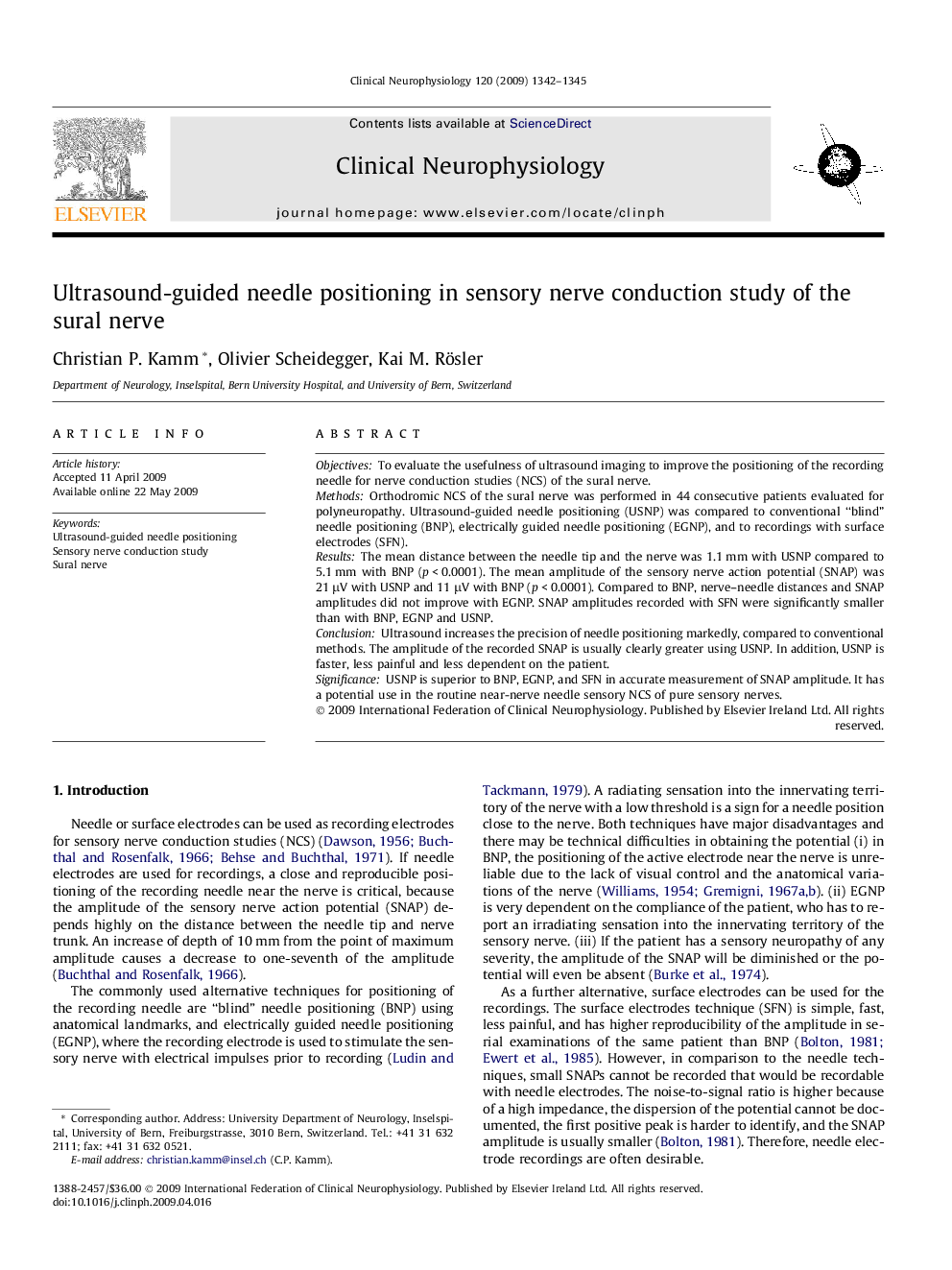| Article ID | Journal | Published Year | Pages | File Type |
|---|---|---|---|---|
| 3046567 | Clinical Neurophysiology | 2009 | 4 Pages |
ObjectivesTo evaluate the usefulness of ultrasound imaging to improve the positioning of the recording needle for nerve conduction studies (NCS) of the sural nerve.MethodsOrthodromic NCS of the sural nerve was performed in 44 consecutive patients evaluated for polyneuropathy. Ultrasound-guided needle positioning (USNP) was compared to conventional “blind” needle positioning (BNP), electrically guided needle positioning (EGNP), and to recordings with surface electrodes (SFN).ResultsThe mean distance between the needle tip and the nerve was 1.1 mm with USNP compared to 5.1 mm with BNP (p < 0.0001). The mean amplitude of the sensory nerve action potential (SNAP) was 21 μV with USNP and 11 μV with BNP (p < 0.0001). Compared to BNP, nerve–needle distances and SNAP amplitudes did not improve with EGNP. SNAP amplitudes recorded with SFN were significantly smaller than with BNP, EGNP and USNP.ConclusionUltrasound increases the precision of needle positioning markedly, compared to conventional methods. The amplitude of the recorded SNAP is usually clearly greater using USNP. In addition, USNP is faster, less painful and less dependent on the patient.SignificanceUSNP is superior to BNP, EGNP, and SFN in accurate measurement of SNAP amplitude. It has a potential use in the routine near-nerve needle sensory NCS of pure sensory nerves.
